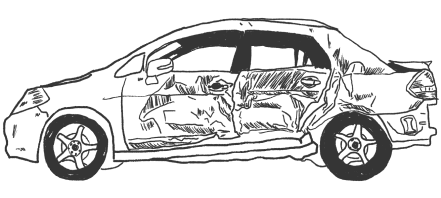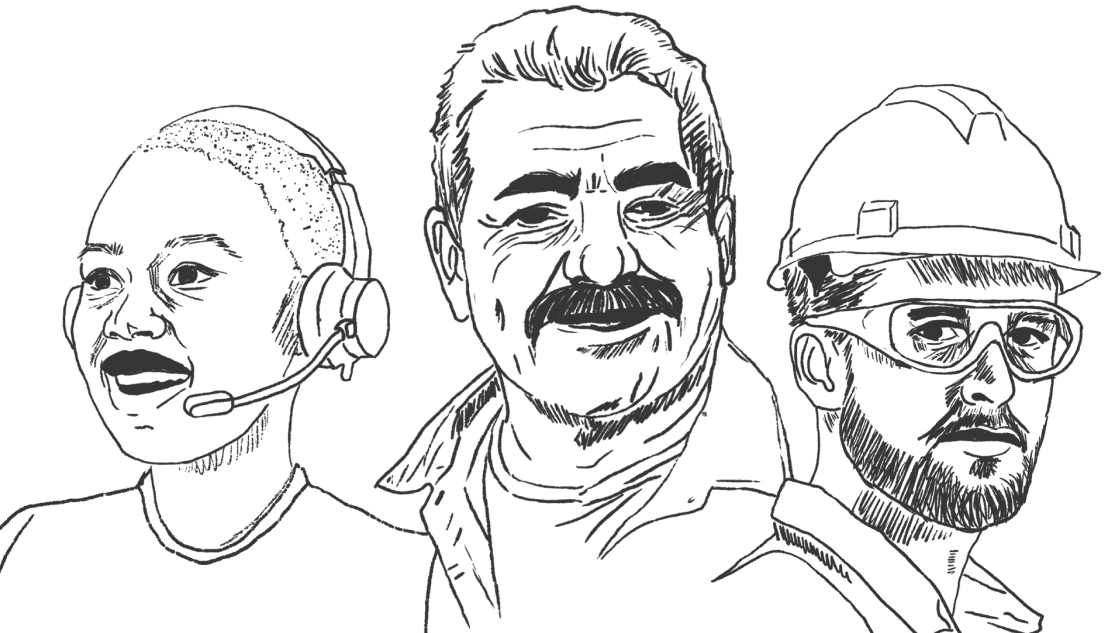Steps to Take After a Distracted Driving Accident in Brownsville
When you're involved in a car accident because someone else was distracted, either by texting, eating, adjusting the radio, or simply not paying attention, your world can change in a split second. Injuries, bills, stress, and uncertainty can accumulate quickly. But what you do right after the crash can make a massive difference for your recovery, your medical treatment, and any compensation you pursue.
At Anderson Alexander (A2X), we’ve helped many people in Brownsville and across Texas rebuild their lives after being involved in distracted driving accidents. We understand how challenging it can be physically, emotionally, and financially. That’s why we take over the hard work of building your case so you don’t have to worry about legal details while recovering. Below are clear and easy steps you should take immediately after a distracted driving accident, and how we step in to help.
Step 1: Make Sure Everyone’s Safe and Get Medical Help
The top priority is always your health and safety. If possible, move off the road to a safer spot. Call 911 to make sure law enforcement and medical responders arrive. Even if you feel okay, don’t skip medical attention. Some injuries (like internal injuries, whiplash, or concussions) don’t show up right away but worsen over hours or days.
When medical help arrives, follow the advice you’re given. Keep records of every medical visit, every diagnostic test, prescription, and therapy session. For A2X, those medical records become crucial evidence that we use to show exactly what your injury is, how it’s being treated, and what you’ll need in the future. We will assist you in obtaining comprehensive documentation from hospitals, clinics, and doctors.
Step 2: Report the Accident to the Police
Once you’re safe and medical help is on the way (if needed), you or someone with you should report the accident to the police. Let them know you suspect distraction played a role. That means if you saw or have reason to believe the other driver was texting, using their phone, or otherwise distracted, you must report it. The police report typically includes observations about the driver's behavior, statements from witnesses, injuries, and vehicle damage. In the long term, all of this plays a significant role in your case.
After the report is filed, be sure to get a copy of it. Our team will obtain the police report on your behalf and review it carefully to identify helpful details. We use that report to compare your story, the scene, and witness statements. It helps us see what evidence is already documented and what else we need to gather.
Step 3: Document Everything at the Scene
You might only have a few minutes, or less, before the scene is cleared, cars are moved, evidence is lost, or people leave. If you can safely do so, take photos of all involved vehicles, damage, skid marks, any debris on the road, road conditions (potholes, weather, visibility), traffic signs or signals, and your own injuries.
If your phone or clothing was damaged, take a photograph of that as well. Any visible evidence that suggests the other driver was distracted (e.g., seeing their phone in their hand, texting notifications, or screens lit up) is helpful.
If you are severely injured and can’t do this, that’s okay. Our team moves quickly to collect evidence, interview witnesses, document the scene, and preserve what might otherwise vanish, all while leveraging your efforts. We are aware of how quickly evidence can degrade, how memories can fade, how businesses may delete surveillance footage, and even how people can move cars or clean up debris. We don’t wait.
Step 4: Gather Witness Information
If possible, and if there were any bystanders, passengers, people in other cars, or pedestrians who witnessed the accident, obtain their names and contact information. Ask them if they saw the other driver using their phone or being distracted in some other way. Witness statements can be powerful because they provide an outside perspective; what you think happened might be corroborated or given context by someone else.
At A2X, once you reach out to us, we immediately contact these witnesses as well. We understand the importance of their accounts, especially when a fault is disputed. We formally preserve their statements so they aren’t lost or forgotten.
Step 5: Preserve Physical Evidence
Physical evidence is often among the most persuasive in distracted driving cases. This can include your damaged vehicle, the other vehicle, parts that broke, video evidence if nearby cameras caught something, dashcam footage (yours or others’), or anything in the car that suggests distraction (phone incidents, etc.).
If a phone or device is involved, its records may show whether calls, texts, or app usage occurred just before the crash. If there’s video, photo, or dashcam footage, you’ll want to collect or preserve that quickly before it’s overwritten or deleted.
We handle this part for you at A2X. We identify potential sources (traffic cameras, nearby businesses, law enforcement, phone records), and we work to collect them before they disappear. You shouldn’t have to track every piece yourself. Part of our job is to ensure that nothing essential is lost.
Step 6: Keep Detailed Records of Your Injuries, Damages, and Financial Losses
As you recover, keep track of all expenses: medical bills, physical therapy sessions, medications, and specialist appointments. Also note any lost wages, missed work, or reduced earning capacity. Keep copies of repair bills for your vehicle, rental car costs, transportation costs to and from medical appointments, and any other expenses caused by the crash.
Also note how this has affected your daily life, including things like your pain levels, suffering, emotional distress, limitations in mobility, and inability to perform everyday activities. These are harder to quantify, but with proper documentation and testimony, they are significant. We want to ensure that you receive compensation for all the challenges you face in the aftermath of an unexpected accident.
We collaborate with medical experts, economists, therapists, and other professionals to calculate both your financial losses and non-financial damages. We want to help you recover your full cost, including the ways your life has changed forever.
Step 7: Don’t Admit Fault
Insurance companies often call quickly after an accident, sometimes before you even leave the hospital. They may ask you questions, request a recorded statement, or push you to sign forms. It’s normal for them to do this.
But you should be very cautious. Anything you say might be used later to undermine your claim. At A2X, we advise that you limit your statements to simple facts: when, where, and how the crash happened, and avoid guessing or taking blame. If insurance requests a recorded statement or form, please consult with us first so we can understand the questions being asked, identify any potential rights at stake, and determine how your answers may impact your claim.
Step 8: Contact A2X as Soon as Possible
One of the best moves you can make after a distracted driving accident is to contact an attorney who understands how to handle these cases, particularly in Brownsville, Texas, because time is of the essence. Statutes of limitations (i.e., deadlines for filing lawsuits) run out. Important evidence disappears. Witnesses move away.
At A2X, we have experience handling distracted driving claims, collecting phone records, collaborating with traffic and accident reconstruction experts, analyzing vehicle damage, and calculating long-term losses. From the moment you engage us, we take over the burden of investigation, negotiation, and litigation. You focus on healing, your medical treatment, and your family. We will manage the legal process, paperwork, strategy, and fight for maximum compensation.
Step 9: Understand Texas Laws That Can Affect Your Case
Texas has specific laws around distracted driving that can impact your claim. For example, since 2017, texting while driving has been banned statewide under Texas Transportation Code § 545.4251.
Also, Texas applies a “modified comparative fault” rule: if you are found partly responsible for the accident, your compensation may be reduced by your percentage of fault. If you share more than 50% of the fault, you may not be able to recover anything.
Being aware of these laws helps you make informed decisions after the accident about what to say, what to do, and how to document the situation. A2X enables you to navigate all of this so you don’t make missteps that could hurt your ability to recover what you deserve.
Why A2X Fights
We’ve seen the toll these accidents take on victims and families in Brownsville: life-altering injuries, permanent disabilities, overwhelming medical bills, lost income, and emotional trauma that lingers long after the physical wounds have healed. These aren’t just “car crashes”, they’re crises that upend everything.
Distracted driving is more than a traffic violation. It’s a widespread danger that destroys lives in a single, preventable moment. And far too often, the people who suffer the most are left with the least support. That’s why we do what we do.
We believe you deserve more than just a settlement. You deserve answers. You deserve accountability. You deserve a legal team that will dig deep, fight hard, and stand with you from start to finish.
So if you or someone you love has been injured in a distracted driving accident in Brownsville, don’t let uncertainty or fear stop you from protecting your future. The decisions you make in the hours, days, and weeks after a crash can significantly impact your entire recovery, and you don’t have to make them alone.
At A2X, we move fast. We secure critical evidence, protect your rights, communicate with insurers, and aggressively pursue the full compensation you're entitled to. We take on the stress so you can focus on healing.
Contact Anderson Alexander today. We’re ready to help you take the next step, and we’ll be with you every step of the way.

Request a Consultation
Other Practice Areas




